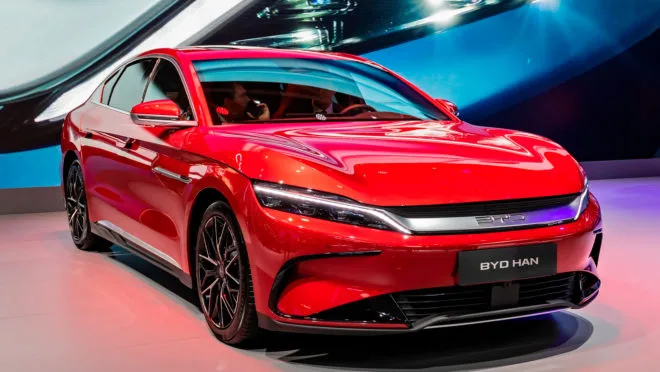Electric vehicles (EVs) are speeding ahead, transforming the way we think about transportation. As of 2023, a groundbreaking shift in the EV landscape is the rise of ultra-fast chargers, capable of delivering 300 miles of range in just 20 minutes. This innovation is reshaping the future of electric mobility, making EVs more convenient and accessible than ever before. In this article, we’ll explore how ultra-fast charging stations are revolutionizing the EV experience, what this means for drivers, and where the technology is headed.
The Need for Speed: Why Ultra-Fast Chargers Matter
Accelerating EV Adoption
According to Bloomberg Green, the global EV market is projected to grow by 40% annually, with ultra-fast chargers playing a critical role in supporting this expansion. These chargers significantly reduce the charging time, addressing one of the main concerns of potential EV buyers: long charging durations. With more drivers making the switch from traditional vehicles to EVs, the demand for efficient charging solutions is at an all-time high.
Technological Advancements
Ultra-fast chargers, such as those developed by companies like Tesla, Rivian, and Volkswagen, employ cutting-edge technology to deliver high power outputs, often exceeding 350 kW. This rapid charging capability is supported by advancements in battery technology, including higher energy density and improved thermal management systems. According to MIT Technology Review, these improvements enable batteries to handle faster charging without compromising safety or longevity.
Infrastructure Expansion
The expansion of ultra-fast charging infrastructure is key to widespread EV adoption. InsideEVs reports that major players like Electrify America and Ionity are aggressively expanding their networks, aiming to install thousands of ultra-fast charging stations across Europe and North America by the end of 2025. This widespread availability will make long-distance travel more feasible for EV owners, reducing range anxiety and encouraging more people to switch to electric.
How Ultra-Fast Charging Works
Charging Technology
Ultra-fast chargers use direct current (DC) to deliver electricity directly to the battery, bypassing the slower alternating current (AC) conversion process. This direct transfer is what allows for such rapid charging times. Chargers like Tesla’s Supercharger V3 and Hyundai’s E-Pit utilize this technology, offering ultra-fast charging speeds that are becoming the industry standard.
Battery Compatibility
Not all EVs are equipped to handle ultra-fast charging. Vehicles need to be compatible with high-power chargers, which often require advanced thermal management systems to prevent overheating. Brands like Lucid Motors and BYD are leading the charge by equipping their new models with this capability, setting a benchmark for others to follow.
Practical Tips for EV Owners
- Check Compatibility: Ensure your EV model supports ultra-fast charging.
- Plan Ahead: Use apps to locate ultra-fast charging stations along your route.
- Monitor Battery Health: Regular use of ultra-fast charging can affect battery longevity; consult your vehicle’s manual for guidance.
Benefits and Challenges of Ultra-Fast Charging
Pros of Ultra-Fast Charging
- Time Efficiency: Reduce charging times from hours to minutes.
- Convenience: More accessible charging options for long-distance travel.
- Enhanced Adoption: Encourages more consumers to switch to EVs.
Challenges to Overcome
- Cost: Ultra-fast charging stations are expensive to install and maintain, which can lead to higher costs for consumers.
- Grid Demand: Increased energy demand requires grid upgrades to prevent overloads.
- Battery Stress: Frequent use of ultra-fast charging can cause wear and tear on batteries.
Overcoming Challenges
Efforts are underway to address these challenges. Governments and private companies are investing in grid infrastructure upgrades and providing incentives to offset installation costs. According to Reuters Mobility, partnerships between energy companies and automakers are crucial for developing sustainable solutions that balance demand and supply.
The Future of Ultra-Fast Charging
A Growing Network
The future of ultra-fast charging looks promising, with plans for global networks expanding rapidly. By 2030, the International Energy Agency (IEA) predicts that the number of ultra-fast chargers will increase tenfold, making EV charging more accessible than ever.
Integration with Renewable Energy
The integration of renewable energy sources with ultra-fast chargers is a key trend to watch. As reported by PV Magazine, solar and wind power are increasingly being used to power charging stations, reducing the carbon footprint of EV charging and promoting sustainable energy use.
Innovations on the Horizon
Future innovations may include wireless charging technologies and smart grid integration, which will further streamline the charging process and enhance the overall EV ownership experience. TechCrunch highlights ongoing research into these areas, suggesting that the next decade could bring even more revolutionary changes to EV charging.
Conclusion: The Road Ahead for EV Charging
In summary, the rise of ultra-fast chargers in 2023 marks a significant milestone in the evolution of electric vehicles. These advancements not only make EVs more convenient but also pave the way for a sustainable transportation future. As we look ahead, the continued expansion of charging infrastructure, coupled with technological innovations, promises to redefine our relationship with electric mobility. Are you ready to embrace the future of driving? Join the conversation and share your thoughts on the impact of ultra-fast charging in the comments below. Together, we can drive change and accelerate the transition to a cleaner, greener world.

